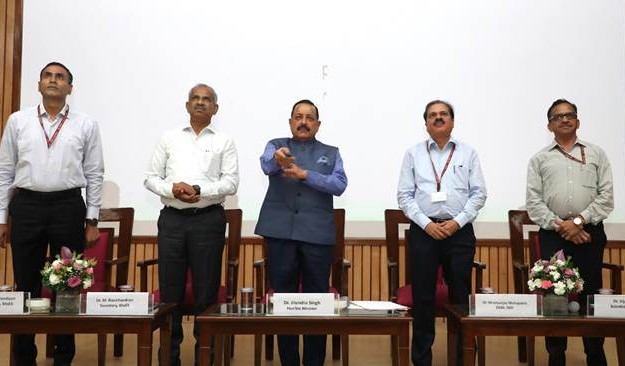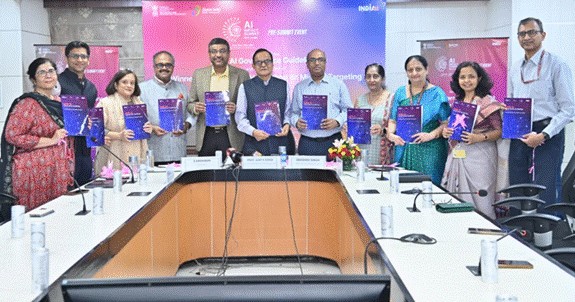India’s Climate Preparedness Strengthened as Dr Jitendra Singh Launches 14 New Earth Sciences Initiatives on Ministry’s Foundation Day

Union Minister Dr Jitendra Singh unveils a set of new scientific tools and digital services developed by the Ministry of Earth Sciences (MoES) in New Delhi on Monday
New Delhi, July 28: India’s climate resilience and scientific preparedness received a significant boost today as Union Minister Dr Jitendra Singh unveiled a suite of 14 new scientific tools and digital services developed by the Ministry of Earth Sciences (MoES). Speaking at the 19th Foundation Day celebrations of the Ministry in New Delhi, the Minister highlighted a decade of transformation and emphasized science as a central pillar of both ecological sustainability and India’s economic future.
Empowering Citizens Through Science
Describing the Ministry as a “citizen-service institution,” Dr Singh said the Government’s mission-mode approach has made it possible for even casual users to now access live weather alerts, cyclone warnings, air quality updates, and ocean forecasts on mobile phones.
“This is not just about data—it’s about saving lives and empowering livelihoods,” he said.
Among the newly launched products were:
- Bharat Forecast System – Extended Range Prediction (BharatFS-ERP)
- High-resolution rainfall datasets
- Crop-weather calendars
- Advanced wave atlases and seabed charts
- Air quality forecasting systems
- Marine biodiversity reports
- Seismic microzonation studies for four Indian cities
The India Meteorological Department (IMD) also released a documentary titled Life Saving Impact showcasing the Ministry’s impact on public safety and awareness.
A Decade of Scientific Transformation
Dr. Singh noted the Ministry’s rapid infrastructure growth:
- Doppler weather radars increased from 15 in 2014 to 41 in 2025
- Significant expansions in weather stations, lightning detection networks, and upper-air observation systems
- Near-instant earthquake alerts are now issued within 2–3 minutes of a seismic event
He credited these improvements with minimizing casualties from recent cyclones, contrasting them with the devastating 1999 Odisha cyclone that claimed nearly 10,000 lives.
Science in Service of Agriculture and Fisheries
The Minister also emphasized the Ministry’s real-world impact on agriculture and fisheries, noting that:
- Over 7 lakh farmers now use the Meghdoot app for weather-based farm advisories
- Fishermen receive daily SMS alerts guiding them to safe and fuel-efficient fishing zones
“Science must be communicated in the language people understand,” Dr Singh stressed, urging greater public outreach and cross-ministry coordination.
Ocean Sustainability and India’s Deep Sea Future
Highlighting ocean-based sustainability, Dr Singh celebrated the success of six Ocean Thermal Energy Conversion (OTEC) desalination plants in Lakshadweep, which now produce 1.5 lakh litres of potable water daily—a historic transformation for the islands long dependent on rainwater and imports.
He also positioned the Deep Ocean Mission as a future economic engine, comparing it to the upcoming Gaganyaan space mission.
“Just as we aim to send one Indian into space, we may soon send another 6 km deep under the sea with Samudrayaan. One up, one down—that’s the vision,” he quipped.
Increased Budget and Global Collaboration
The Ministry’s budget has nearly tripled over the past decade—from ₹1,281 crore in 2014 to ₹3,658 crore in 2024—enabling advanced research and strategic projects.
The event featured participation from senior officials including MoES Secretary Dr M. Ravichandran, IMD Director General Dr. Mrutyunjay Mahapatra, and UNESCO Chair Prof. Dev Niyogi (virtually from the University of Texas), underscoring the Ministry’s expanding international footprint.








